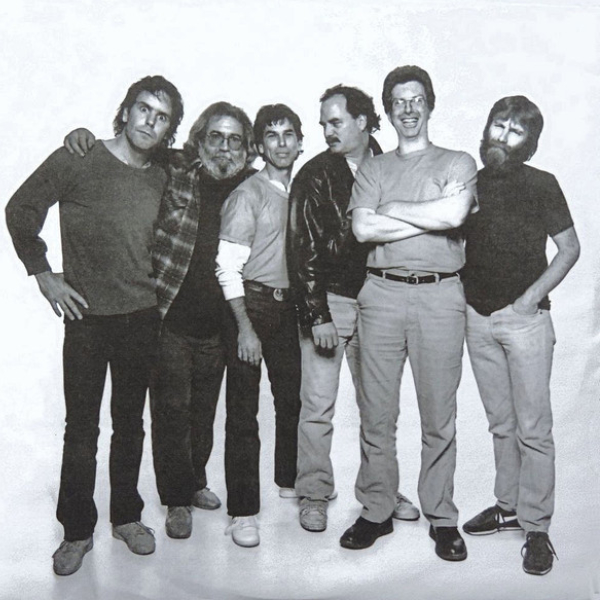Two Late-Period Grateful Dead LPs, 1977’s Terrapin Station and 1987’s In The Dark, Respectively Receive Much Improved Remastered and Plangent-Restored 1LP Reissues From Rhino
One of the most exciting technologies I’ve come across in recent years that’s been used to restore significant recordings by the likes of Bruce Springsteen, The Doors, the Grateful Dead, and The Who is from a company called Plangent Processes. I have previously written about this technology as it applies to other releases I’ve reviewed here on AP — such as the Dead’s 1977 live at Boston Garden 5LP set, Boston Garden, Boston, MA 5/7/77 (a.k.a. Boston 5.7.77) — so I won’t go into super detail this time into how it all works. For additional context, just consider the following comment from legendary producer Phil Ramone, who said, “Anybody who does a transfer without using this [technology] is nuts.”
That said, if you need a refresher and/or an introduction to the process, go here, and scroll down to the Plangent explanation section.
I mention all this upfront because Plangent Processes is again at the center of a pair of new Grateful Dead reissues that were released by Rhino back in January: a) July 1977’s Top 30 hit LP Terrapin Station and July 1987’s Top 10 smash In the Dark, and now we’re finally getting around to reviewing them here together.
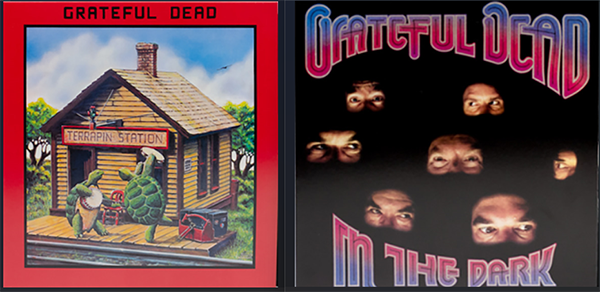
Before we get into the nitty-gritties of how these two fine-sounding standard editions stack up against some of their previous versions, let’s first run down some of the key DNA we know at present. Both Terrapin Station and In the Dark have been reissued as standard-weight single LPs, available in either black vinyl or color variants (green for Terrapin, and silver for Dark). Both LPs recreate the original album artwork in a high-quality matter in mirroring the original editions, including the respective custom inner sleeves.
Generally, these two pressings have been mostly good, are fairly quiet, and are well-centered. We don’t yet have direct confirmation of exactly where these LPs were pressed, but we can confirm the quality of each LP is quite, quite good — albeit with two niggling minor caveats we’ll get to in a moment. The SRP for each 1LP set is $24.98, respectively. You should be able to find them in stock in your local indie record shop, or you can order them directly from the Dead’s official store, right here.
Both of these reissues have been newly mastered by Grammy Award-winning engineer David Glasser of Airshow Mastering, Boulder, Colorado, and they both feature Plangent Processes Tape Restoration and Speed Correction. Please note that, while the LPs themselves do not indicate this information due to a production credits oversight, we have directly confirmed these facts with Plangent founder Jamie Howarth, and formal attribution has subsequently appeared on related entries for the albums on the Grateful Dead’s site and their respective listings in the store.
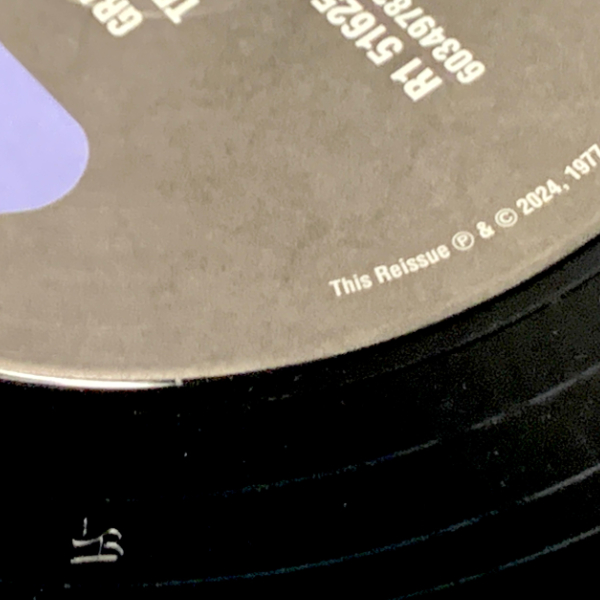
Also inexplicably not detailed on either reissue cover or inner sleeve is information on who cut the physical lacquers used for making the new vinyl pressings. Fortunately, we have employed a bit of AP-style record-collector geekery to determine that the new lacquers for these reissues were cut by Chris Bellman of Bernie Grundman Mastering, Los Angeles. The iconic connected “CB” etching from Bellman that’s in the deadwax/runout groove of the 2020 VMP edition of Terrapin Station, matches up to similar etchings found on the new 2024 Rhino editions, which you can see in the photos we’ve included both above and below.
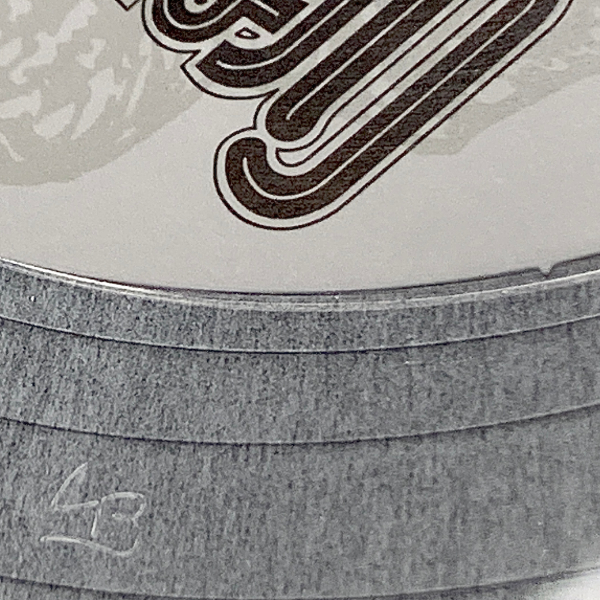
Now, the prospect of trying to “fix” two recordings that a number of Dead fans agree to be fairly perfect in their own way may seem counterintuitive. But the producers of these reissues — driven by the Dead’s own audio archivist and legacy manager, David Lemieux — clearly had some solid rationale for wanting to pursue the Plangent option. The proof, as they say, is in the pudding, and when you listen to these two 2024 Rhino albums objectively, just as we have from our vantage point, the taste is mighty sweet.
Let’s now get into each LP individually.
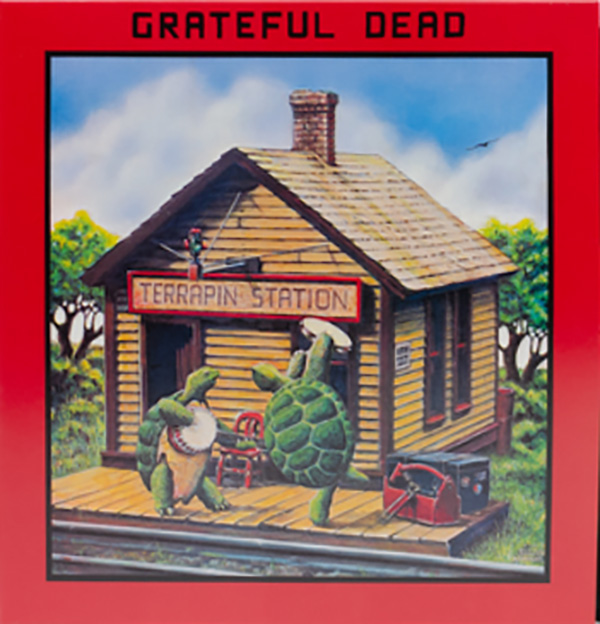
TERRAPIN STATION
As I was first listening to this newly remastered edition of July 1977’s Terrapin Station, which is one of my favorite Grateful Dead albums — yes, even in all its over-produced glory! — I had to pause, because I was hearing detail that I had not noticed before on prior editions of this record I own.
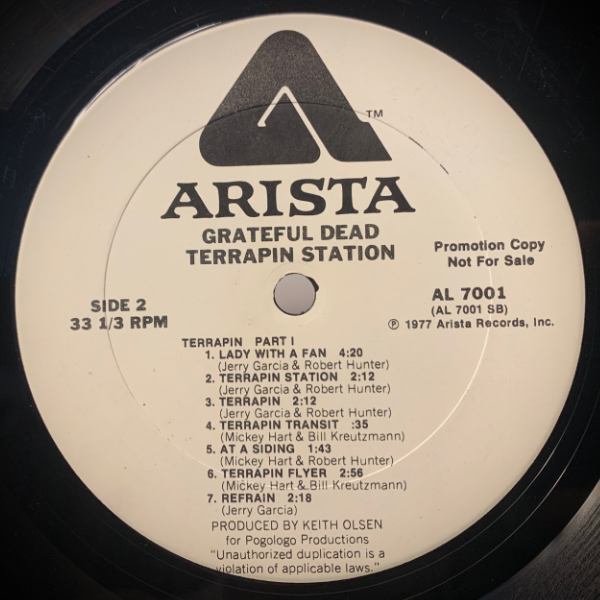
For one, I have an original white label DJ promo copy of Terrapin Station on Arista, as well as the aforementioned 2020 AAA remaster done by Chris Bellman at Bernie Grundman Mastering that was issued by VMP as part of their epic 11LP anthology set, The Story of the Grateful Dead. So, I was rather amazed to hear this new Rhino version actually sounded quite a bit different — and I mean that in a good way.
I reached out to the aforementioned Plangent Processes founder Jamie Howarth to check whether he had been personally involved, and, if so, whether I was imagining things. He confirmed that (whew) I was not hallucinating, and that he had indeed worked on the restoration using his proprietary technology. (As I mentioned earlier, it turns out proper attribution for this work was accidentally overlooked initially in the reissue credits, but the Dead have since posted proper attribution in their online store.)
When you stop to consider the notion of taking an album like Terrapin Station — which is one of the Dead’s most sophisticated productions — and somehow making it sound better is some pretty amazing sorcery.
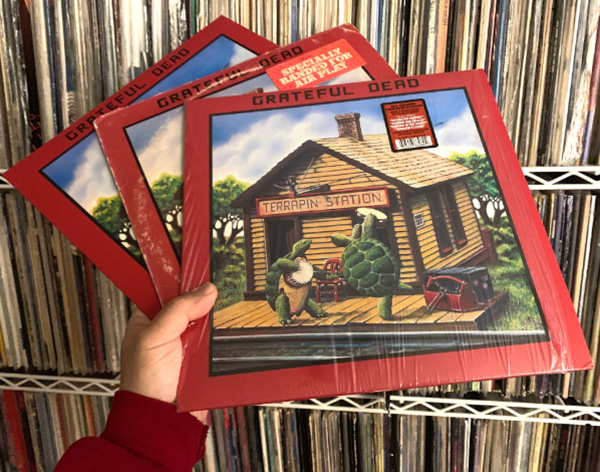
Inspired by all this wizardry, I thought you might appreciate a little quasi-shootout-style perspective, comparing all three of my versions back to back (and then some), so here goes. My 1977 white-label Arista promo copy sounds real nice, but the high end is relatively limited. The album works well at high volume but is curiously midrangy, with details like cymbal splashes appearing fairly subdued on tracks like “Dancin’ in the Streets” (Side 1, Track 2 [still incorrectly listed as Track 4 on the back cover!]) and throughout the whole “Terrapin Part I” suite that comprises the entirety of Side 2.
The 2020 VMP AAA version of Terrapin Station sounds somewhat similar, but no doubt delivers a more detailed perspective. For example, Jerry Garcia’s distorted guitar stabs (if you will) during the chorus sections of “Terrapin Station” (Side 2, Track 2) are more pronounced and certain special effects pop more. The high end is also overall a little brighter and more balanced, comparatively. Curiously, I noticed that the guitar hook around the point where “Terrapin Transit” (Side 2, Track 4) leads into “At a Siding” (Side 2, Track 5) sort of wavers a little bit. (Hold on to that thought for a moment.)
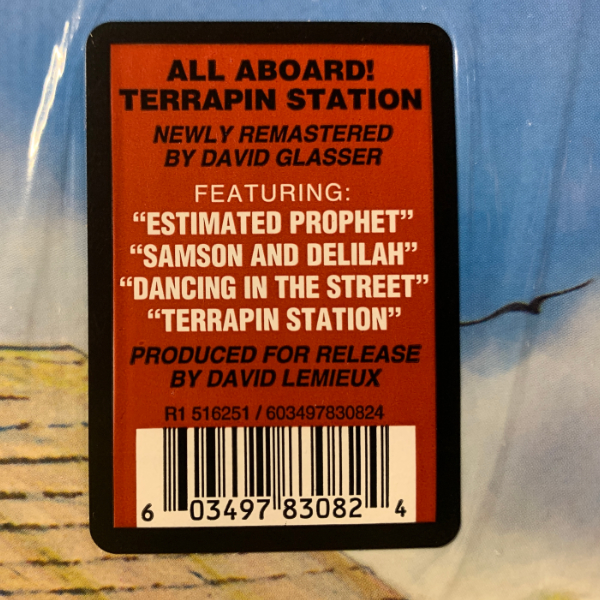
Switching over to the new Plangent Terrapin Station remaster, I immediately noticed more audible high end, especially apparent on the cymbals, with many little splashes appearing far more audibly. The detailing on Phil Lesh’s lyrical bass lines are more distinctive. The whole performance sounds more steadfast and, frankly, rocking. Everything just pops better.
Going back to the aforementioned “Terrapin Transit” sequence (Side 2, Track 4), the fine production detailing is super-apparent, including little bells and wind chime-like flourishes. Garcia’s guitar in this section is more defined, and that aforementioned wavering is reduced, now sounding steadier. I can hear Jerry’s guitar sustaining more. The tom-tom hits from drummers Mickey Hart and Bill Kreutzmann are more resonant and realistic-sounding here, and the gong hits resonate more genuinely.
Those little counterpoint horn parts pop more nicely in the mix now, and you can even feel some of the studio air around the trumpet soloist. As the end of the “Terrapin Part I” suite picks up steam, the drums fly along neatly, especially noting those dueling ride cymbals which are now crystal-clear, ping-ponging against one another in each channel of the stereo soundfield.
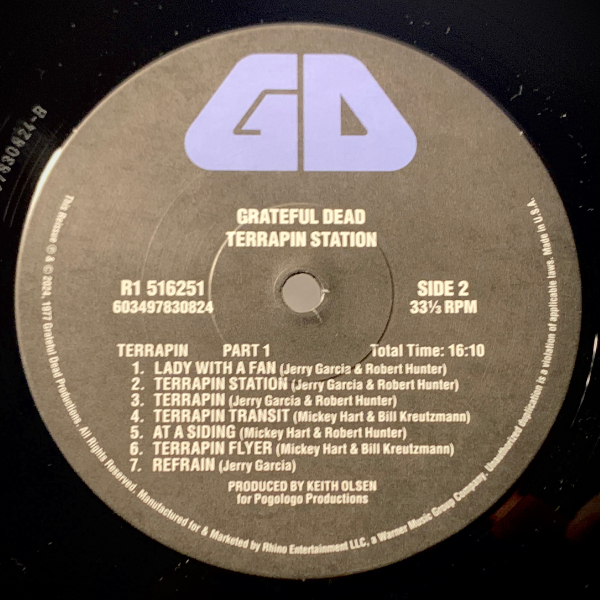
And remember, folks, this is not a remix — this is a combination of sympathetic and thoughtful digital remastering by David Glasser, working from original recordings that have been put through Howarth’s Plangent Processes, which corrects for tape speed and other fluctuation anomalies often incurred at the time of recording.
My only ding for this version of Terrapin Station is that I heard a couple telltale pfffts along the way, indicating a pressing-related non-fill issue. That said, they were short-lived and relatively non-intrusive, and thus, not a dealbreaker for me — but you should be aware of them.
[AP editor Mike Mettler adds: My copy of the 2024 Terrapin Station, which I bought at one of my preferred local indie shops, also evidenced a few pfffts here and there on Side 1 but not on Side 2, so I agree with Mark’s overall assessment that they are not dealbreakers in the least, given the overarching quality of this new pressing.]
Overall, I find this new edition of Terrapin Station to be a very strong reissue. I do wish the label had gone the extra step to release it on 180g instead of standard-weight vinyl, and perhaps had it made at a high-end plant like RTI, QRP, or Optimal. But for the $24.98 price point, this Terrapin Station is most definitely a fine reissue value.
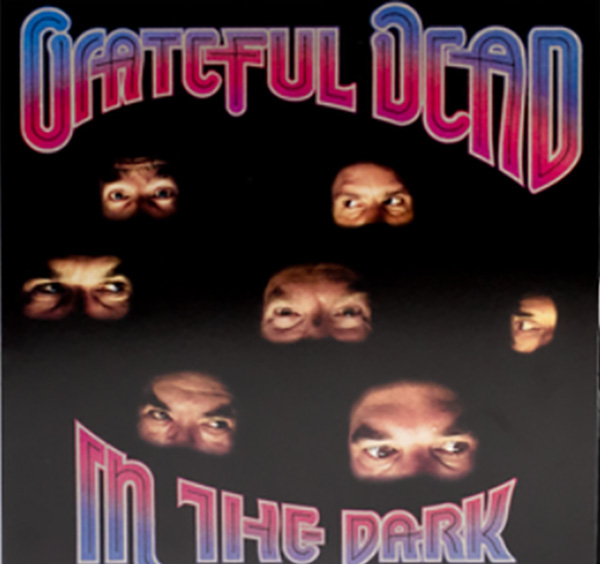
IN THE DARK
Before I start, I have to be upfront with a revelation that still seems to shock even some of my Deadhead friends: In the Dark, the Grateful Dead’s biggest-selling hit July 1987 album, was never my favorite — and I never quite knew why. Like many a fan, I had become familiar with most of the songs on this record after hearing the band performing them live in concert for many years prior to its release.
When the In the Dark material was finally released as a studio album, I was unfortunately underwhelmed. Something about the recording was leaving me flat and cold. I know that many folks feel Terrapin Station was overproduced, but In the Dark had gimmicky moments that felt odd to me, as they seemed to jump out of the speakers and get in my face.
More importantly, to me, In the Dark just wasn’t a very enjoyable listen, as it sounded oddly bright and heartless especially on the Arista CD, which was how I first heard the music. Years later, I finally picked up a vinyl version of In the Dark on Arista that went a long way to improving my attitude towards the album, but still, something wasn’t quite sitting right for me. The music still felt compressed, hard-edged, and one-dimensional. It was almost like someone had been trying to make the band sound not like the Grateful Dead to fit in with the flavor of radio at the time. (This assessment is admittedly just speculation, but certainly a fair assumption to make.)
Picking one of the weaker tracks on the album as an example, the distorted guitar stabs on Brent Mydland’s “Tons of Steel” (Side 2, Track 1) deliver a sort of cheesy, faux-Stones boogie-rock band vibe vs. the rich swing of the band knew was in there somewhere. Bob Weir’s “Throwing Stones” (Side 2, Track 2), a popular concert fave with its Buddy Holly/Bo Diddley-flavored chorus, hints at a rich production, but ultimately feels hollow. The music never jumped out of the speakers.
And when I turned up the music loudly when playing my original pressing, the sound got uncomfortable to endure, almost akin to a poor digital mastering job (though I think this one was done analog, back in its day). The music ultimately kind of falls apart — at least for me it does — at loud volume on that earlier pressing. I could go on, but I think you get the idea of what I am talking about here.
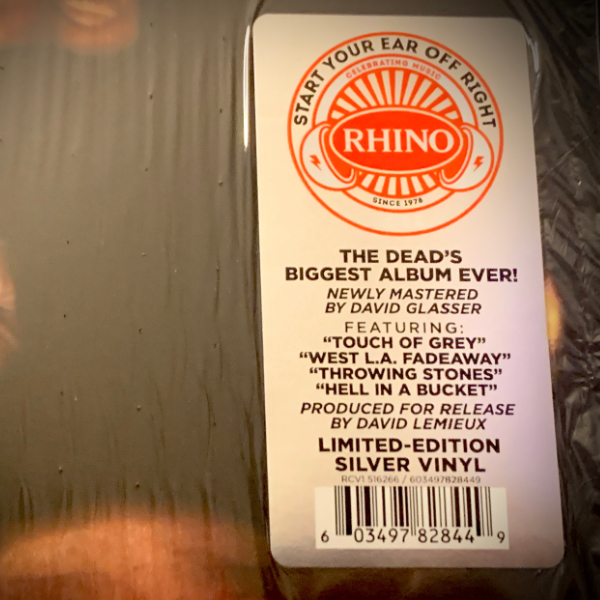
Jumping into the new 2024 Rhino reissue, the In the Dark listening experience has been pretty much a night and day difference! Going back to “Tons of Steel,” that annoying thin guitar stab is richer, and it blends in more neatly with Mydland’s synthesizer textures, while the other guitar (which I assume to be Garcia’s, in the other channel) offers a sweeter balance. I can actually enjoy this song now, something that has never happened with any version of the album I’ve heard before!
And when I turn up the volume loudly, the music and band feel doesn’t disintegrate on this edition of In the Dark. Jerry’s guitar solos sound sweet and natural now. There is also a tighter unity coming across in the music, where you can feel Phil Lesh’s bass locking in with the two drummers, Hart and Kreutzmann, more readily.
This continuity of sound makes sense — and, again, the combination of Glasser’s thoughtful and more musical remastering plus restorative support from Howarth’s Plangent Processes delivers across the board. Consider that the basic tracks for In the Dark were recorded in an empty concert hall (Marin Veterans Auditorium in San Rafael, California) via a remote mobile recording truck — a process that leaves all manner of opportunity for power inconsistencies to come into play that could ultimately impact the stability of the recordings, and thus the final recording quality.
Going back to “Throwing Stones” (Side 2, Track 2), now, when the snare drum hits you on the 2024 LP, can hear more of the actual snares resonating against the drum heads, while those big percussive bomb-like hits explode more realistically. You can also detect more of the cool production effects applied to them. The kick drums sound rounder and punchier as well.
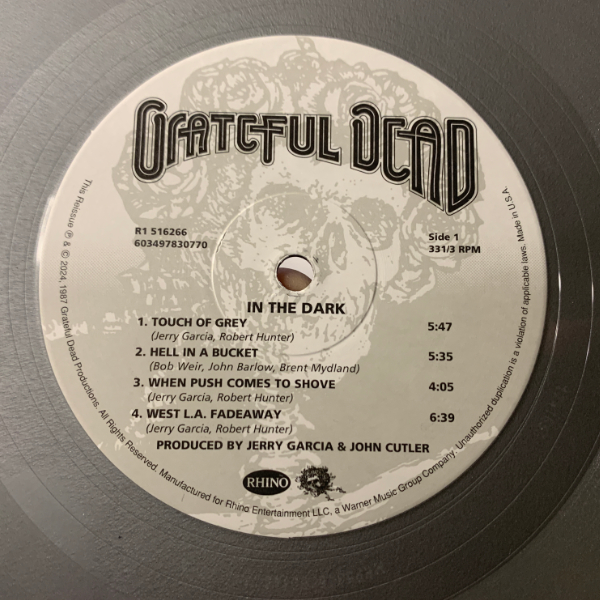
“Touch of Gray” (Side 1, Track 1) and “Hell in a Bucket” (Side 1, Track 2) rock harder and stronger on this new remaster than I’ve ever really heard from In the Dark, propelled along with a notable drive I always found lacking on the original edition. Garcia’s voice sounds thin on that original LP, with some sort of harsh phasy-effect impacting his vocals — but now, on the 2024 Rhino LP, his vocals are more prominent and distinct. That special effect is still there, but it’s not dominating the natural sound of his voice.
Even the special studio sound effects like motors revving don’t feel quite as awkward and gimmicky as they did previously. The slinky groove on “West L.A. Fadeaway” (Side 1, Track 4) is sexier with a neat triangle ching hanging luxuriously in the middle of the air along with a whole lot of ambience from that Marin County auditorium they recorded in.
Amazingly enough, my opaque silver vinyl pressing of In the Dark is remarkably quiet though some surface noise is audible between tracks at louder volumes, so if that is an issue for you, do seek out the standard black vinyl version instead. My copy is also very well-centered — a detail I greatly appreciate as my original Arista LP is somewhat off-center (which also adds to the weak listening experience there).
The best complement I can offer here is that, with this new Rhino edition, I feel like I’m discovering the music on In the Dark for the first time. And that is a joy! I always wanted to like this record more than I did in the past, so, if you’ll pardon the avoidable cliche, this really does feel like I’m coming out of the dark on this album. Now I can honestly say I like it, and I can finally recommend it to others who might want to hear a good-sounding representation of late-period Grateful Dead on vinyl.
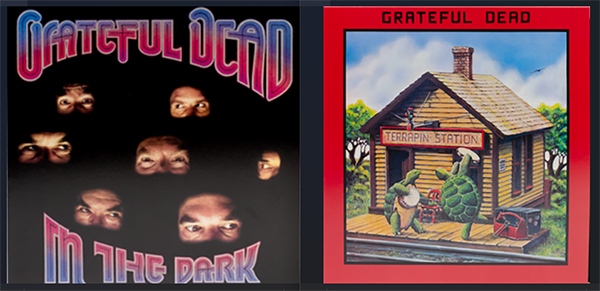
As far as our overall summed numerical ratings go for these two Dead-on-Rhino LPs, the Music is a solid 9 between them, especially now that I can better appreciate the content of In the Dark, which would have been around a 5 or a 6 to me back in the day, but it’s closer to an 8.5 now, thanks to this Rhino edition. (I still rate Terrapin Station on its own as a 10 for Music, even if you might not!)
We then give each of these fine LP releases a solid 8.5 for Sound apiece, allowing for those little critical dings mentioned regarding a) the noted yet relatively minor surface-noise issue on the silver vinyl edition of In the Dark, and b) the minor non-fill pressing issues both Mettler and I experienced on Terrapin Station. But since we can’t yet show ratings half-increments on our ratings-knob graphic, you will see that it’s been rounded upwards to a 9 for Sound.
Either way, that Sound rating still allows for future wiggle room in the event that the label and/or the band decide to issue super-deluxe uber-audiophile edition of Terrapin Station and In the Dark as part of the so-far excellent Rhino High Fidelity series (as they’ve literally just done with November 1970’s American Beauty). In the meantime, bravo to the Grateful Dead and their remastering production team for pushing to improve these fine vinyl releases, both of which are worthy — and affordable — additions to your collection.
Mark Smotroff is an avid vinyl collector who has also worked in marketing communications for decades. He has reviewed music for AudiophileReview.com, among others, and you can see more of his impressive C.V. at LinkedIn.
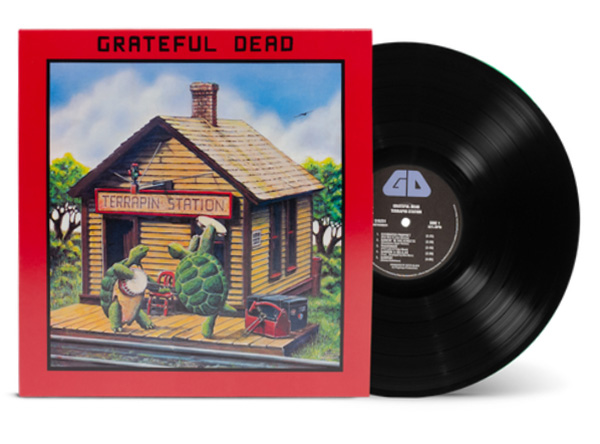
GRATEFUL DEAD
TERRAPIN STATION
1LP (Grateful Dead/Rhino)
Side 1
1. Estimated Prophet
2. Dancin’ In The Streets
3. Passenger
4. Samson & Delilah
5. Sunrise
Side 2
Terrapin Part I
1. Lady With A Fan
2. Terrapin Station
3. Terrapin
4. Terrapin Transit
5. At A Siding
6. Terrapin Flyer
7. Refrain
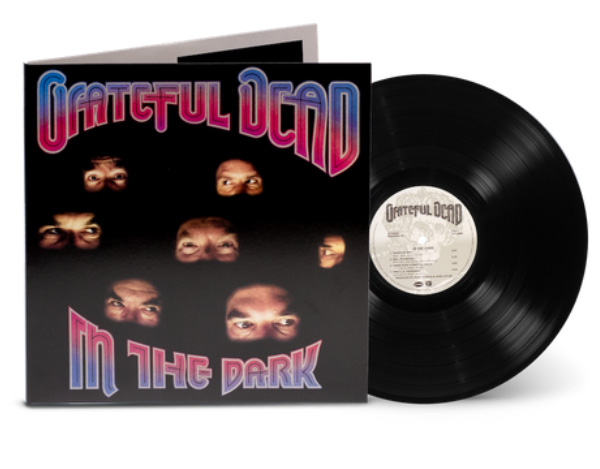
GRATEFUL DEAD
IN THE DARK
1LP (Grateful Dead/Rhino)
Side 1
1. Touch Of Grey
2. Hell In A Bucket
3. When Push Comes To Shove
4. West L.A. Fadeaway
Side 2
1. Tons Of Steel
2. Throwing Stones
3. Black Muddy River
